Join us via LIVE STREAM Sunday at 10:30am for the Unity Service
Temple Buddhist Center In-Person Sunday Services 9am and 10:30am
Temple Buddhist Center Sunday Service Livestreamed at 9am
Charles Fillmore was a dreamer and a visionary. He believed all people had the capacity to realize their desires if they had emotionally charged faith. He had a vision of a magnificent Temple on the Country Club Plaza in Kansas City. The Temple would be dedicated to his wife, Myrtle.
Charles bought a lot on the corner of 47th and Jefferson and committed to paying $5000 a year for eight years. This land would be the future home of the Myrtle Fillmore Temple on the Plaza, later to become known as Unity Temple on the Plaza.
Unity Temple was fifteen years in the planning stage. Within a year after the purchase of the land the Great Depression began. Contributions to the project dwindled. In 1939 World War II broke out causing a shortage of building material, fuel and construction workers, delaying further the building of the Temple. However, Charles’ faith remained strong.
In July of 1945 sixty five thirty-foot pillars and approximately 199,000 bricks came together on the corner of 47th and Jefferson and Charles’ vision of the Temple began to manifest in the physical realm.
About a year later the construction company retained for the project declared that due to the shortage of materials there was to be a steep increase in the price of building the Temple. Instead of the total cost being $600,000 it would now cost over $1,000,000. After being turned down by every bank contacted, Lowell Fillmore, head of the Building Committee, knew the only way to fund the Temple was through issuing building bonds. When faced with the increased costs, he said, “We will go ahead.” Unity Temple Bonds were issued. Lowell presented his vision to the world and the world responded. Money came in from all over the world, and from over 100,000 different people.
June 20, 1948, after 15 years in the planning and five years of construction, Unity Temple opened its doors to the public. The building was dedicated as a haven of rest and inspiration for all people. Added later was the phrase, “A place where diversity is praised, and peace and harmony are the rewards.”
The bonds issued and all debt on Unity Temple was completely retired in 1960.
In 1991 Unity Temple merges with the Myrtle Fillmore Center and Duke Tufty assumes leadership.
Around that same time, it became clear that church and religion needed to evolve and adapt to the changing times. New ways of providing spiritual support and healthy lifestyles began to emerge. Unity Temple soon grew from a church that offered Sunday morning and Wednesday evening services to a bustling center with spiritual classes, services, workshops, support groups and many other activities, seven days a week.
In 1993, The Cornerstone Foundation was founded as the Temple’s Speakers’ Forum. World renowned speakers were brought to Kansas City to speak at Unity Temple.
In the mid-1980s, three retired men from the railroad began to meet once a week at Unity Temple to facilitate an AA support group. By the nineties, society was changing, and people were becoming more aware of alcohol and drug abuse. 12-step support groups became popular for those seeking recovery. Today, Unity Temple has over 20 12-step group meetings weekly with an attendance of over 300 people.
Spirituality and All That Jazz, a revolutionary new program started in 1994. Tim Whitmer presented a monthly Jazz concert in an auditorium setting. The concept was an immediate hit. Tim brought in the best artists in the Kansas City area to perform. His vision and faith he had in the program prevailed and recently celebrated their 25th anniversary, making it the longest continuing Jazz program in the country.
In the late 1990’s, interest in Buddhism began to grow around the country and in Kansas City. In 1996 Ben Worth founded the American Buddhist Center at Unity Temple. It wasn’t seen as a competition to Christianity, but simply a way to live closer to spiritual truth and closely aligned to Unity’s principles based on the teachings of Jesus Christ. Today it is known as the Temple Buddhist Center and is flourishing with classes and services under the direction of Victor Dougherty.
With meditation as one of the cornerstones for spiritual living, Serenity Pause began. Twice daily, 30-minute, secular meditation, at 12:10pm and 5:30pm, 365 days a year, is offered to all people, free of charge.
When the name Unity Temple is used, it is referring to the building where many diverse activities take place. Although church services are part of what Unity Temple offers, its greater purpose is that of a center for well-being, where everyone is welcome. The mission of Unity Temple is to be a source of support and inspiration.
Today, Unity Temple is a spiritual home for a countless number of people. Over 5,000 people come through the doors each week to engage in approximately 70 different activities. It is a beacon of light for the Kansas City community. As dedicated in the beginning, Unity Temple is a haven of rest and inspiration for all people. Unity Temple is 70 years strong, lifting people to greater levels of well-being.
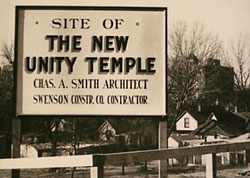
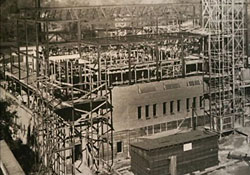
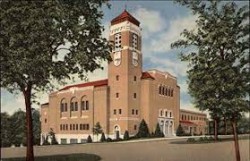
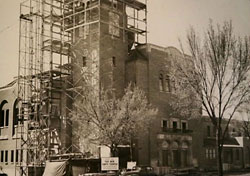
Office hours
Monday-Thursday, 9:30 a.m.-4:30 p.m.
Building hours
Monday-Saturday, 10 a.m.-9 p.m. and
Sunday 8:30 a.m.-1:30 p.m.
 |
Wairimu NjeruConservator |
 |
Wairimu NjeruConservator |
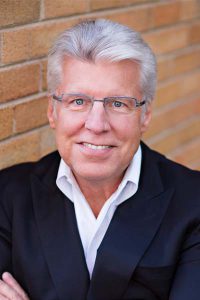
|
Rev. Duke TuftySenior Minister and CEOReverend Duke Tufty was born in the beautiful town of Sioux Falls, South Dakota. One of four children, he was raised to someday take over the family business which was an automobile dealership. His father died when Duke was 24 years old. Duke, his brother Ted and sister Trudy inherited the business. After fifteen years in the business Duke had a spiritual awakening and discovered the automobile business was not for him. He embarked on a spiritual path that led him to Unity. Eventually he became the Senior Minister at Unity Temple on the Plaza as well as Chairman of the Board of Directors for Unity Worldwide Ministries located at Unity Village. Above all, Duke cherishes his family life – wife, Leesa; kids, Cathy, Adam, Duke II, Kristin, Isaiah, Tanya, Merrill, Darin; and grand kids Owen, Landon, Isaiah IV. |
 |
Rev. Duke TuftySenior Minister and CEOReverend Duke Tufty was born in the beautiful town of Sioux Falls, South Dakota. One of four children, he was raised to someday take over the family business which was an automobile dealership. His father died when Duke was 24 years old. Duke, his brother Ted and sister Trudy inherited the business. After fifteen years in the business Duke had a spiritual awakening and discovered the automobile business was not for him. He embarked on a spiritual path that led him to Unity. Eventually he became the Senior Minister at Unity Temple on the Plaza as well as Chairman of the Board of Directors for Unity Worldwide Ministries located at Unity Village. Above all, Duke cherishes his family life – wife, Leesa; kids, Cathy, Adam, Duke II, Kristin, Isaiah, Tanya, Merrill, Darin; and grand kids Owen, Landon, Isaiah IV. |
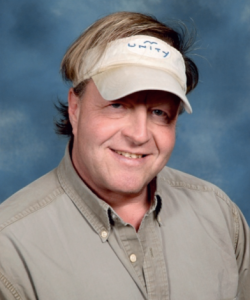
|
Christopher SchulzeBuilding Manager |
 |
Christopher SchulzeBuilding Manager |

|
Cindy LaisChief Financial Officer |
 |
Cindy LaisChief Financial Officer |
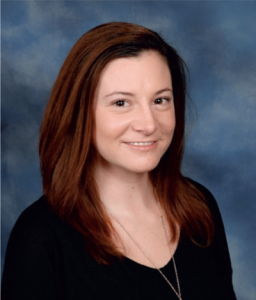
|
Cassie BenderChief Operating OfficerCassie Bender has worked at Unity Temple since 2008. She has served in the positions of Conservator and Wedding Coordinator. Cassie is now Chief Operating Officer. |
 |
Cassie BenderChief Operating OfficerCassie Bender has worked at Unity Temple since 2008. She has served in the positions of Conservator and Wedding Coordinator. Cassie is now Chief Operating Officer. |
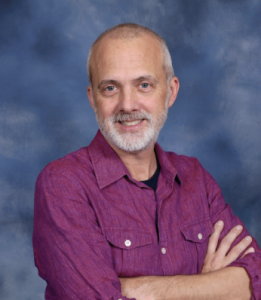
|
Victor DoughertyDirector of Temple Buddhist Center“Through our chanting we merge our personal consciousness momentarily with the infinite consciousness that is our origin and our destiny. It is the drop of water finding its way back into the ocean from which it came.” Complete strangers can stand silent next to each other in an elevator and not even look each other in the eye. But at a concert, those same strangers could find themselves dancing and singing together like best friends. That’s the power of music. America urgently needs a stronger protest movement dedicated to reducing the glorification of violence in our culture – in music, film, television, video games, and even the Internet. |
 |
Victor DoughertyDirector of Temple Buddhist Center“Through our chanting we merge our personal consciousness momentarily with the infinite consciousness that is our origin and our destiny. It is the drop of water finding its way back into the ocean from which it came.” Complete strangers can stand silent next to each other in an elevator and not even look each other in the eye. But at a concert, those same strangers could find themselves dancing and singing together like best friends. That’s the power of music. America urgently needs a stronger protest movement dedicated to reducing the glorification of violence in our culture – in music, film, television, video games, and even the Internet. |
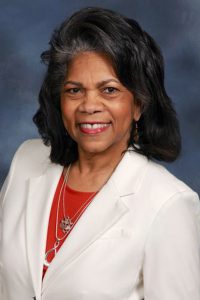
|
Rev. Sandra CampbellAssociate MinisterRev. Sandra Campbell, MSM, has been a member of Unity Temple on the Plaza since 1980, where she served three terms on the Board of Directors, co-founded the Temple Toastmasters Club, taught Sunday School, and was a member of the Chancel Choir. Sandra completed ministerial training through Unity Urban Ministerial School in 2012 and was licensed and ordained by Unity Worldwide Ministries in 2013. Sandra currently serves as an Associate Minister at Unity Temple on the Plaza. She leads the Sunday morning Metaphysical Bible Interpretation class and the Mid-Week service on Wednesday evenings. She is Vice-President of the UUMS Board of Directors and a member of the school’s Adjunct Faculty. Sandra has taught various Unity courses, including Metaphysical Interpretation of Christian Scriptures, Spiritual Economics, Discover the Power Within You, Lessons in Truth, Prosperity Plus, and many others. In addition to the ministry, Sandra is an Adjunct Professor with Webster University. |

|
Rev. Sandra CampbellAssociate MinisterRev. Sandra Campbell, MSM, has been a member of Unity Temple on the Plaza since 1980, where she served three terms on the Board of Directors, co-founded the Temple Toastmasters Club, taught Sunday School, and was a member of the Chancel Choir. Sandra completed ministerial training through Unity Urban Ministerial School in 2012 and was licensed and ordained by Unity Worldwide Ministries in 2013. Sandra currently serves as an Associate Minister at Unity Temple on the Plaza. She leads the Sunday morning Metaphysical Bible Interpretation class and the Mid-Week service on Wednesday evenings. She is Vice-President of the UUMS Board of Directors and a member of the school’s Adjunct Faculty. Sandra has taught various Unity courses, including Metaphysical Interpretation of Christian Scriptures, Spiritual Economics, Discover the Power Within You, Lessons in Truth, Prosperity Plus, and many others. In addition to the ministry, Sandra is an Adjunct Professor with Webster University. |
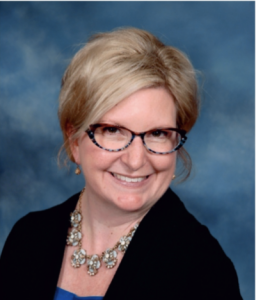
|
Jennifer WattsDirector of EventsJennifer Watts was born and raised in Kansas City and is the proud mom of two amazing young women. She has spent the last 15 years working in finance in the non-profit sector and prior to that in the corporate arena. She became a part of the staff in August of 2018 and loves the sense of community and energy at the Temple and feels blessed to be part of a place that fosters acceptance, growth, family, love and spirituality. |
 |
Jennifer WattsDirector of EventsJennifer Watts was born and raised in Kansas City and is the proud mom of two amazing young women. She has spent the last 15 years working in finance in the non-profit sector and prior to that in the corporate arena. She became a part of the staff in August of 2018 and loves the sense of community and energy at the Temple and feels blessed to be part of a place that fosters acceptance, growth, family, love and spirituality. |

|
Rev. Anne TaborSenior Minister and CEOReverend Anne Tabor is a devoted ambassador for the Unity movement. She holds a Master of Divinity from Unity Institute & Seminary and a B.A. in Journalism from Georgia State University. Anne finds great joy in sharing Unity principles and inspiring others to discover their own spiritual power within. Before joining Unity Temple on the Plaza in 2025, Anne served as Senior Minister at Unity of Arlington (TX) for over nine years. During seminary, she and her husband, David Hart, co-led the Wednesday Evening Love Lift (“The W.E.L.L.”) at Unity Temple, creating meaningful and heartfelt services together. Anne is the creator of Daily Fillmore, which has been sharing daily quotes by our Unity Co-Founders, Charles and Myrtle Fillmore, on Facebook since 2012, and reaches over 18,000 friends and followers each day. She is also the founder of “Put A Myrtle On It!” which is available on YouTube. Before answering her call to ministry, Anne enjoyed a vibrant career as a film and television producer in Los Angeles, working on shows like Damages, The Twilight Zone, and Soul Food. It was while working on In the Heat of the Night that she met David. Little did they know at the time that their friendly field trip to a Braves baseball game together would blossom into thirty years of marriage. |
 |
Rev. Anne TaborSenior Minister and CEOReverend Anne Tabor is a devoted ambassador for the Unity movement. She holds a Master of Divinity from Unity Institute & Seminary and a B.A. in Journalism from Georgia State University. Anne finds great joy in sharing Unity principles and inspiring others to discover their own spiritual power within. Before joining Unity Temple on the Plaza in 2025, Anne served as Senior Minister at Unity of Arlington (TX) for over nine years. During seminary, she and her husband, David Hart, co-led the Wednesday Evening Love Lift (“The W.E.L.L.”) at Unity Temple, creating meaningful and heartfelt services together. Anne is the creator of Daily Fillmore, which has been sharing daily quotes by our Unity Co-Founders, Charles and Myrtle Fillmore, on Facebook since 2012, and reaches over 18,000 friends and followers each day. She is also the founder of “Put A Myrtle On It!” which is available on YouTube. Before answering her call to ministry, Anne enjoyed a vibrant career as a film and television producer in Los Angeles, working on shows like Damages, The Twilight Zone, and Soul Food. It was while working on In the Heat of the Night that she met David. Little did they know at the time that their friendly field trip to a Braves baseball game together would blossom into thirty years of marriage. |
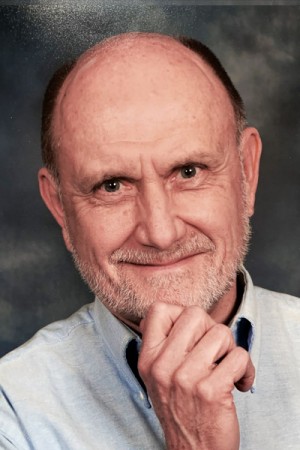
Marty Dybicz, Ph.D., is a licensed psychologist in Missouri and Kansas with 47 years of professional experience. He provides confidential psychotherapy and personal growth counseling to adults, individuals and couples, on a very broad range of concerns, challenges, and difficulties. His professional website provides detailed information about his services and approach: www.martydybiczphd.com. He is also listed on the Psychology Today Therapist Directory (look in the 64112 area code). Dr. Dybicz has worked at Unity Temple since 1998. His fee is $120/hour. He assists clients who have insurance coverage to get reimbursed for their payments to him by providing detailed receipts with all the information that is needed. He schedules appointments with people between the following hours: Monday, Tuesday, and Wednesday 8am-5pm, Thursday 10am-5pm, and Friday 8am-1pm.
Email:
Phone: 816-590-9545
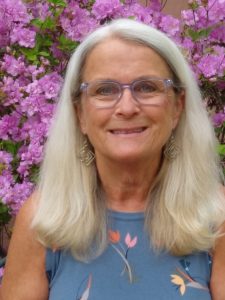 Nancy McCormick, CRAADC,LAC
Nancy McCormick, CRAADC,LACNancy has worked for over 30 years counseling people who are moving through difficult times and barriers in their lives. Nancy’s specialty areas are dynamics of addiction; both for the addict and the family members or loved ones. She also works with those who have experienced domestic violence.
Life can be difficult at times. Sometimes it is beneficial to seek help to move through the challenges. Nancy believes this is done by first building on our strengths, perhaps learning new skills and then moving forward feeling empowered to enjoy the new sense of accomplishment and peace of mind.
Fees are $70/hour for individual and $85 for family sessions. Sliding scale is available.
Email: [email protected]
Phone: 913-558-8393
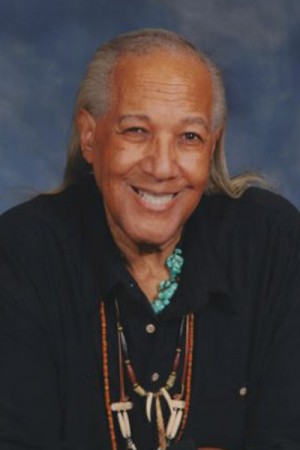
Rev. Ron McCorkle, Ph.D., is a Licensed Diplomat with the American Psychotherapist Association with over 45 years of experience in the field of adult mental health and gerontology. In addition to providing counseling and psychotherapy services, He is a Certified Medical Hypnotherapist, Emotion Release Bodyworker and a Level-II EMDR™ Practitioner. He is also a Religious Science-Science of Mind Practitioner. He also Studied Guided Imagery and Music (GIM) with Helen Bonny, Co-founder of the Institute for Consciousness and Music.
As a former Board-Certified Music Therapist and Certified Therapeutic Recreation Specialist and accomplished musician, Ron incorporates his experience with the expressive arts into providing therapeutic intervention by meeting his clients wherever they are with whatever challenge they may be facing. Providing the affirmation, “YOU CAN DO THIS!” helping you to become the best possible you that you can be. Clients are provided options for assisting with development of their personalized treatment strategy.
All services are personal and private with fees determined based on personal resources and need.
Email: [email protected]
Phone: 816-582-6533
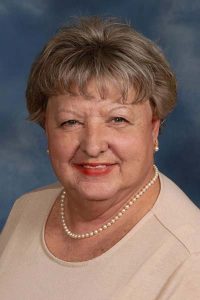
Kathy Sweany was born and raised in Tennessee and relocated to Kansas in 1997 with her job at Sprint. She began attending Unity Temple in 2000 and became a member in 2002. She took early retirement from Sprint in 2008 and volunteered as a receptionist at Unity for a year. Kathy was elected to the Unity Board of Directors in 2008. She became a staff member at Unity in 2009 as the Bookstore Manager. She then moved to Operations Manager and is currently the Finance Manager. Kathy felt at home her first Sunday at Unity Temple and feels truly blessed to be a part of this church community.
Email: [email protected]
Phone: 816-561-4466
You can see how this popup was set up in our step-by-step guide: https://wppopupmaker.com/guides/auto-opening-announcement-popups/